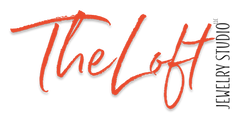Safety Policy
What is Safety?
We might say it is acting in a manner which precludes or avoids injurious behaviors and circumstances. That is, not hurting yourself or others presently or in the future by doing something which causes injury, now or 20 years down the road. The best worker is a safe worker.
One of the biggest issues in safety in complacency. You are used to it, this is the way you have always done it, you don’t see anything wrong, nothing has happened so far. Plan and act safely.
CLOSED TOE SHOES AND TIED UP HAIR ARE MANDATORY
You Are Your Own Canary
In coal mines there used to be caged canaries. If the coal gas built up, the canary, being more sensitive to the gas would keel over, thus warning the miners that they should escape before they too succumbed. It is your job to be aware of your own body and mind, you have to be the canary in your shop. If you feel a headache or feel ill or dizzy or have skin rashes, a sore wrist or any symptom that something may be wrong, it is your own responsibility to listen to yourself and stop what you are doing to see what is the matter. There was a jeweler at SNAG who had massive scars from wrist to elbow on both arms from surgeries to correct various cumulative trauma disorder problems. He told me that when he was working, forging small jewelry components all day that he would really ‘get into it’ and not notice what was happening to him. One of his co-workers told him later that he would frequently have a spasm of pain ride across his face, the co-worker would ask him ‘what is the matter’ are you all right’ and he would answer ‘Yes, I’m fine, nothing is wrong’, not noticing what was happening. So, be aware of your body, check yourself. There are exercises used in some counseling methods, yoga, Tai Chi and other self awareness methods that can be used to listen better to one’s body. Your body and mind usually hints that something is the matter before there is permanent damage. Listen to yourself.
Exposure Routes
The main exposure routes for chemicals are by breathing them in (inhalation), eating and drinking materials (ingestion) - which can also happen when large particles are breathed in, brought into the throat by lung clearing mechanisms and swallowed, and by touching things (absorption). Do not eat or drink in the workshop. If you have to have a drink use the kind of containers with a cap on the end of a straw – this may reduce your potential chemical contact.
Smoking
Smoking, besides being bad for you in all the ways you ought to know by now seems to react synergistically with many chemicals and dusts jewelers have been exposed to, in some cases multiplying the risk of damage really dramatically -don’t smoke.
No smoking is permitted in the studio.
Hygiene
We use our hands so much in the jewelry shop that they get exposed to all kinds of chemicals, metals and dusts, quite apart from the physical stresses on them. It is very important to develop a hand washing habit to reduce contamination of yourself (mouth touching, eating etc.). Regular hand washing and washing them thoroughly before leaving as part of your ‘shutting down the shop’ ritual can help reduce your overall exposure significantly. Use a mild soap. Many people also use hand lotions of various kinds after rinsing.
And, most important, using work clothes such as an apron, overalls or a jump suit helps keep chemicals and metal residues in the workshop and out of the rest of your life, and your family’s life. Work clothing should be washed regularly and separately from other laundry. Any small step you can take to limit your overall exposure means you are that much safer. A lot of small steps add up to increase your safety in the workplace.
Special protective clothing is needed as well, a rubber apron for dealing with chemicals, a thick leather apron for lampworking, hand and arm protectors for kiln work. If you will be doing anything grinding or working on the hydraulic press a face visor is required. And use cotton or non-synthetic in case of fire or hot things landing on it. Hair should always be tied back in the shop to avoid it being caught in machinery.
You don’t want clothing to get caught on equipment or in machinery (no ties should be worn in the workshop)
Don’t wear jewelry when working in the shop. It too can get caught on things.
It has been suggested not to wear a ring at the bench, not only to avoid the dreaded ‘degloving incident’ where a ring gets caught on something, a machine part or a hook of some kind and tears the skin of the finger inside out but because chemicals and dusts can get trapped under the ring and more readily cause dermatitis.
Burns
Burns are a common hazard in the jewelry shop. All goldsmiths get small burns now and then and sometimes larger burns occur as well. Burns were the most common small injury next to small cuts. Don’t use oils or greasy ointments to treat a burn first. The best treatment is to freeze a burn as soon as possible. Burn damage keeps on going for some time after the cause of the burn is removed and if you freeze it fast enough and keep it cold for a while you can often limit the damage considerably.
Several people have reported that they like the juice and leaves of Aloe Vera to treat their burns. For me personally my best experience has been with ice and keeping it cold for a long time.
Burns are avoidable if safety precautions are taken. If you are working with fire, torches, flammable materials, hot liquids then you must set up your workspace to avoid an accident, and if an accident happens, then have it set up so that you don’t get hurt.
Assume everything you touch is hot.
Eyes
Aside from protection from sharp objects, flying chunks of metal, dust, splashes, chemicals we have to deal with glowing materials (infrared light), the blue flame of a high temperature torch (ultraviolet light) and ‘sodium glare’. These are the three kinds of non-ionizing radiation that we worry about.
If you wear glasses now you can have safety glasses with safety frames made at the optometrist which are prescription, bifocal, whatever you need. Some metalworkers wear polycarbonate safety glass over their regular (or even safety) glasses.
Safety glasses, as well as dididium glasses are available for use in the studio. Please use them.
Fire Safety
Fire extinguishers and fire blankets are located throughout the studio to extinguish or smother fires. Please turn off any source of fire – torches, gas etc. before extinguishing a fire.
Moving and Sitting
How you move, sit and work is important. Sit up as straight as possible and move about regularly to avoid getting stiff.
Carpal Tunnel
Carpal tunnel is one of many kinds of Repetitive strain injuries (RSIs) and Cumulative trauma disorders (CTDs) are chronic injuries that result from repeated actions and can cause intense pain and suffering. Surgery may result from some injuries. If you are sore when you do something, then do something else for a while and maybe talk to a specialist about how you work to figure out less damaging ways of doing things.
The Accident Book
Even if you are not required to, keep a safety log. Besides giving you an idea of what things need to be improved in the workshop it is a valuable teaching aid for a new employee. It saves on repeated mistakes. You can have it as part of a ‘Right to Know’ binder where you keep MSDS information on materials in your shop and safety procedures and contact numbers.



